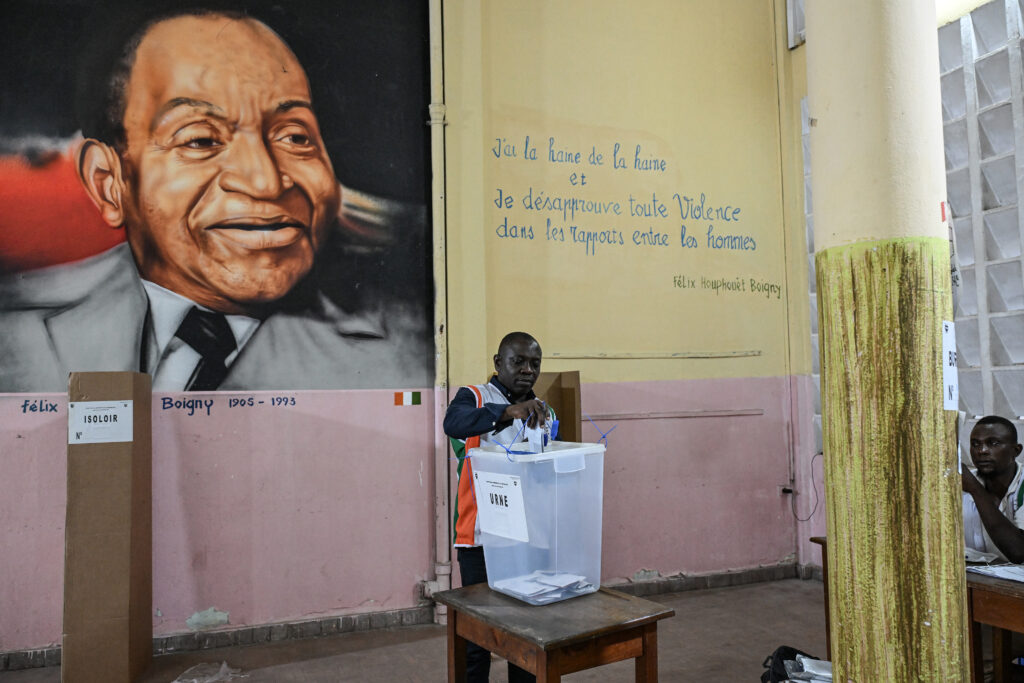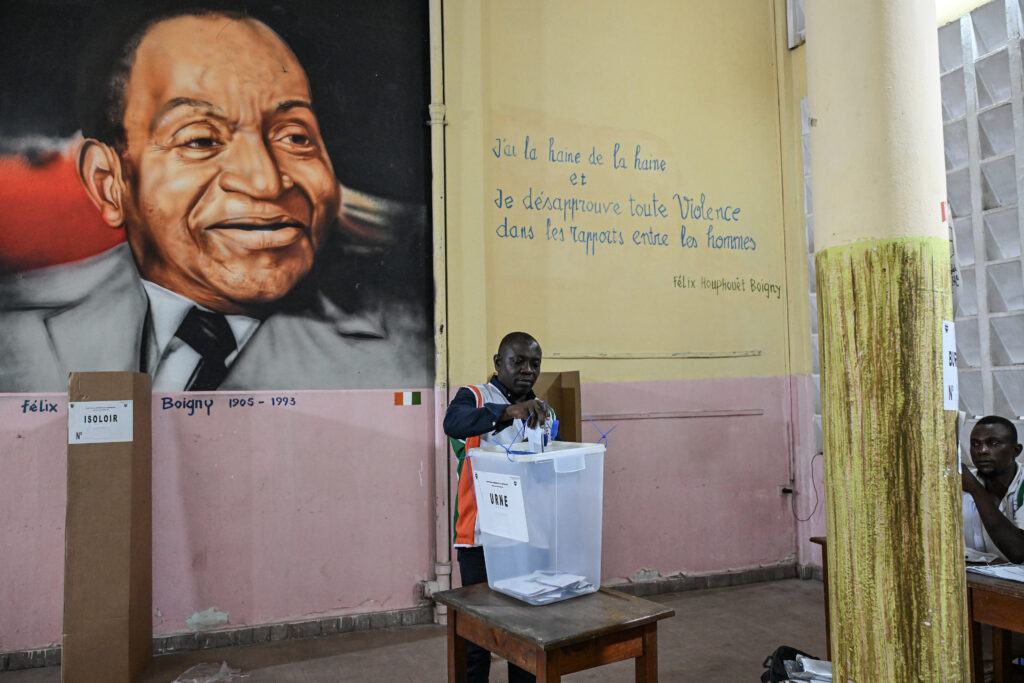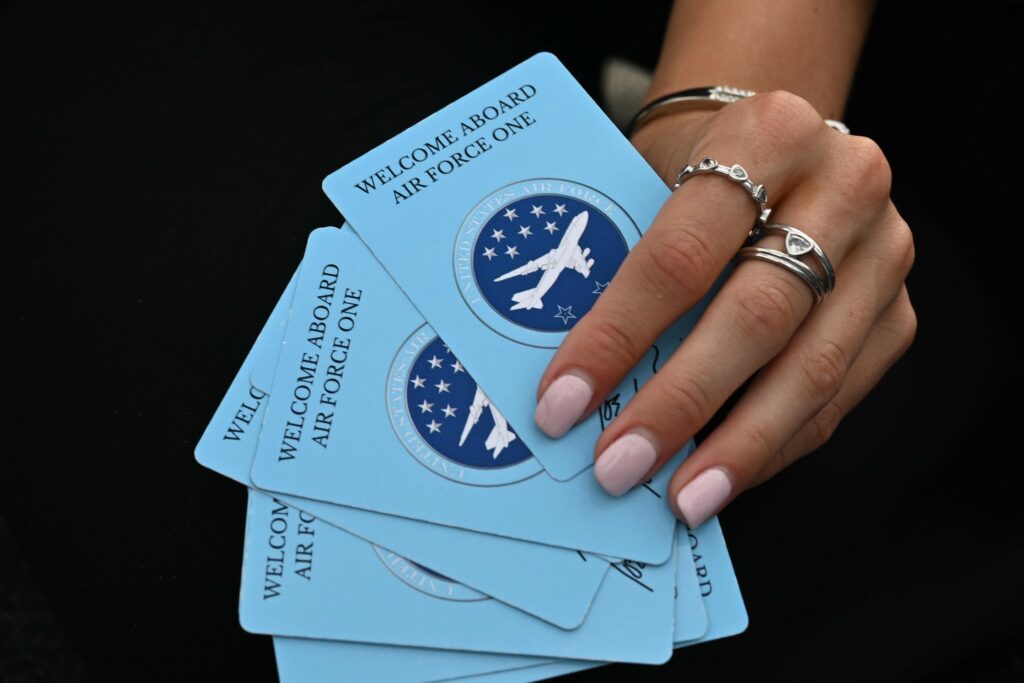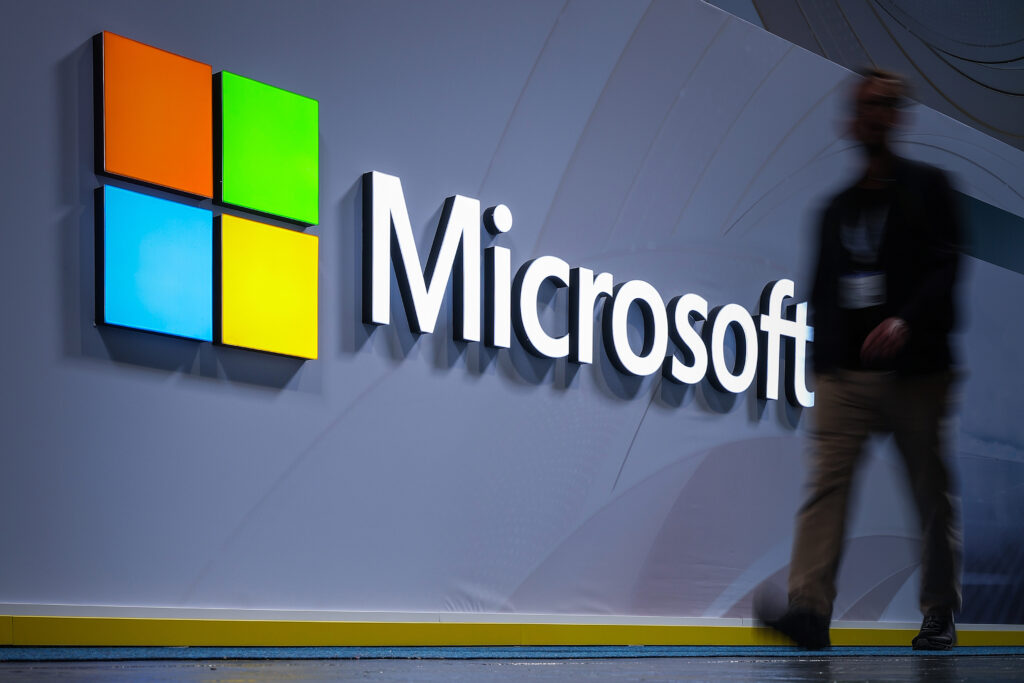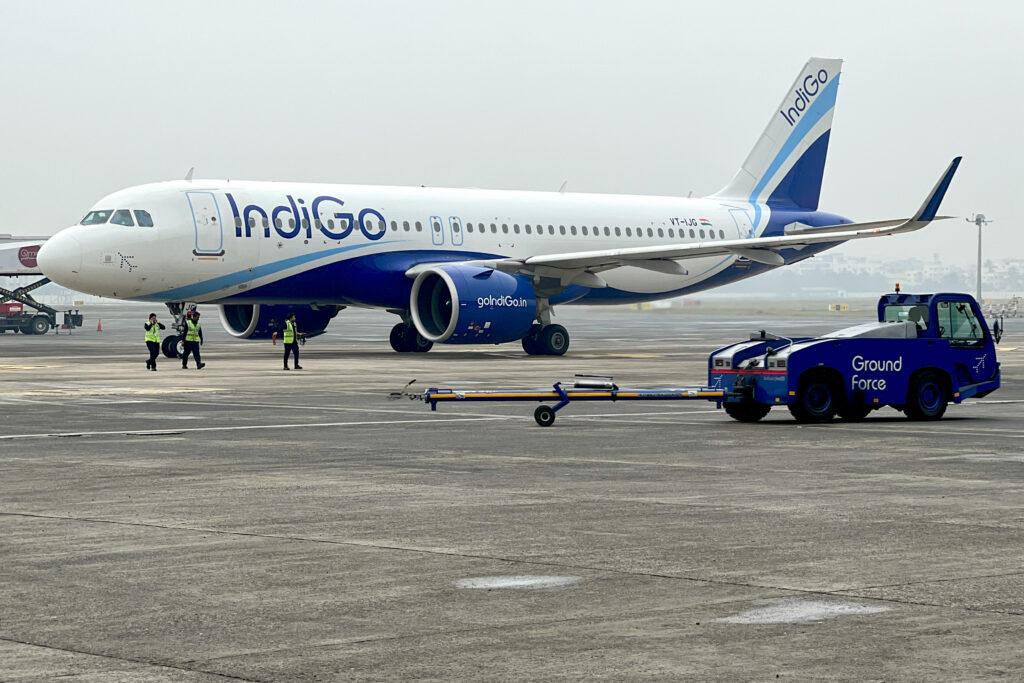Présidentielle ivoirienne: résultats finaux attendus lundi, Ouattara vers un score écrasant
Les résultats finaux de la présidentielle sont attendus lundi en Côte d’Ivoire, les premiers scores égrenés par la Commission électorale présageant d’une écrasante victoire d’Alassane Ouattara qui file sans surprise, à 83 ans, vers un quatrième mandat.Près de 9 millions d’électeurs étaient appelés à voter samedi, dans ce pays premier producteur mondial de cacao et redevenu un pôle de stabilité au sein d’une Afrique de l’ouest secouée par les putschs et les attaques jihadistes.La Commission électorale indépendante (CEI) publie au fil de la journée et de la soirée les résultats pour chacun des 111 départements ainsi que le district d’Abidjan et de la capitale Yamoussoukro. Les derniers résultats sont attendus lundi à 11H00 GMT selon la CEI et la proclamation du président élu, en début d’après-midi. Dans le nord, région à dominante malinké, l’ethnie du chef de l’Etat, comme à chaque présidentielle, il a fait carton plein.98,44% à Séguela, 99,7% à Kani ainsi que dans son fief de Kong, 98,1% à Ferkessedougou ou encore 97,8% à Sinématiali, à chaque fois avec une participation approchant les 100% dans ces zones rurales du pays. Dans les zones du sud et de l’ouest, où beaucoup de bureaux étaient déserts, les chiffres de participation étaient plus faibles, mais “ADO” y est aussi en tête, comme dans la commune cossue de Cocody à Abidjan, où moins de 20% des électeurs se sont déplacés et où M. Ouattara a recueilli 68% des voix.L’un des quatre autres candidats, Jean-Louis Billon, devant ces “premiers résultats”, a adressé ses “félicitations au président sortant pour sa réélection”. Il a salué “un climat globalement apaisé” tout en s’inquiétant d'”un très faible taux de participation, particulièrement dans certaines régions”. Le chiffre officiel de la participation nationale n’est pas encore connu mais le président de la Commission électorale indépendante (CEI), Ibrahime Kuibiert Coulibaly a estimé samedi soir qu’elle devrait “avoisiner les 50%”.Ces scores écrasants et le désintérêt d’une partie des Ivoiriens pour le scrutin s’explique notamment par l’absence de ses deux principaux rivaux. Ni le banquier international Tidjane Thiam, ni l’ancien président Laurent Gbagbo n’étaient sur les bulletins de vote samedi, tous deux ayant été écartés du scrutin et radiés des listes électorales, le premier pour des problèmes de nationalité, le second pour une condamnation pénale.- Deux morts samedi -De quoi rappeler la dernière élection, en 2020, où M. Ouattara avait obtenu 94% des voix avec une participation légèrement au-dessus de 50%, dans un scrutin alors boycotté par les principaux opposants.Ce samedi, quatre adversaires lui faisaient face, mais aucun n’a de chance d’arriver à un second tour, faute de soutien d’un grand parti ou de moyens financiers importants. Si le scrutin s’est déroulé globalement dans le calme, des incidents ont été signalés dans 2% des lieux de vote, soit environ 200 endroits, selon un bilan des forces de l’ordre transmis à l’AFP.Des heurts ont éclaté dans plusieurs localités du sud et de l’ouest, mais sans “incidence majeure sur le déroulement du scrutin”, selon le ministre de l’Intérieur Vagondo Diomandé.Selon une source sécuritaire contactée par l’AFP, une personne de nationalité burkinabè est morte dans la région de Gadouan (centre-ouest) dans des affrontements intercommunautaires, samedi après-midi.Vingt-deux autres ont été blessées, par balle ou arme blanche, l’un d’eux, avec le “pronostic vital engagé” a-t-on appris de même source et les forces de sécurité ont été déployées pour ramener le calme. Un adolescent de 13 ans a été tué “par un tir” provenant d’un véhicule de transport en commun à Gregbeu (centre-ouest), selon cette source. La Côte d’Ivoire est un pays où cohabitent une soixantaine d’ethnies de diverses langues et religions et une large population étrangère principalement venue des pays sahéliens voisins.Au total, six personnes sont mortes depuis mi-octobre en marge du processus électoral, dont deux le jour du scrutin. Dans un communiqué, dimanche soir, le Front commun qui regroupe les partis de MM. Thiam et Gbagbo a fait état de sept morts le jour du scrutin. Déplorant une “communauté internationale restée silencieuse” et un régime “qui a érigé la répression et la peur (…) en stratégie électorale”, il dénie “toute légitimité” à Alassane Ouattara et réclame de nouvelles élections. L’élection présidentielle est toujours synonyme de tensions politiques et intercommunautaires dans l’esprit de nombreux Ivoiriens, après les scrutins de 2010 (3.000 morts) et 2020 (85 morts).Près de 44.000 membres de forces de l’ordre étaient déployés sur tout le territoire et le pouvoir avait interdit les manifestations du Front commun en octobre, procédant à des centaines d’arrestations pour troubles à l’ordre public notamment.
Présidentielle ivoirienne: résultats finaux attendus lundi, Ouattara vers un score écrasant
Les résultats finaux de la présidentielle sont attendus lundi en Côte d’Ivoire, les premiers scores égrenés par la Commission électorale présageant d’une écrasante victoire d’Alassane Ouattara qui file sans surprise, à 83 ans, vers un quatrième mandat.Près de 9 millions d’électeurs étaient appelés à voter samedi, dans ce pays premier producteur mondial de cacao et redevenu un pôle de stabilité au sein d’une Afrique de l’ouest secouée par les putschs et les attaques jihadistes.La Commission électorale indépendante (CEI) publie au fil de la journée et de la soirée les résultats pour chacun des 111 départements ainsi que le district d’Abidjan et de la capitale Yamoussoukro. Les derniers résultats sont attendus lundi à 11H00 GMT selon la CEI et la proclamation du président élu, en début d’après-midi. Dans le nord, région à dominante malinké, l’ethnie du chef de l’Etat, comme à chaque présidentielle, il a fait carton plein.98,44% à Séguela, 99,7% à Kani ainsi que dans son fief de Kong, 98,1% à Ferkessedougou ou encore 97,8% à Sinématiali, à chaque fois avec une participation approchant les 100% dans ces zones rurales du pays. Dans les zones du sud et de l’ouest, où beaucoup de bureaux étaient déserts, les chiffres de participation étaient plus faibles, mais “ADO” y est aussi en tête, comme dans la commune cossue de Cocody à Abidjan, où moins de 20% des électeurs se sont déplacés et où M. Ouattara a recueilli 68% des voix.L’un des quatre autres candidats, Jean-Louis Billon, devant ces “premiers résultats”, a adressé ses “félicitations au président sortant pour sa réélection”. Il a salué “un climat globalement apaisé” tout en s’inquiétant d'”un très faible taux de participation, particulièrement dans certaines régions”. Le chiffre officiel de la participation nationale n’est pas encore connu mais le président de la Commission électorale indépendante (CEI), Ibrahime Kuibiert Coulibaly a estimé samedi soir qu’elle devrait “avoisiner les 50%”.Ces scores écrasants et le désintérêt d’une partie des Ivoiriens pour le scrutin s’explique notamment par l’absence de ses deux principaux rivaux. Ni le banquier international Tidjane Thiam, ni l’ancien président Laurent Gbagbo n’étaient sur les bulletins de vote samedi, tous deux ayant été écartés du scrutin et radiés des listes électorales, le premier pour des problèmes de nationalité, le second pour une condamnation pénale.- Deux morts samedi -De quoi rappeler la dernière élection, en 2020, où M. Ouattara avait obtenu 94% des voix avec une participation légèrement au-dessus de 50%, dans un scrutin alors boycotté par les principaux opposants.Ce samedi, quatre adversaires lui faisaient face, mais aucun n’a de chance d’arriver à un second tour, faute de soutien d’un grand parti ou de moyens financiers importants. Si le scrutin s’est déroulé globalement dans le calme, des incidents ont été signalés dans 2% des lieux de vote, soit environ 200 endroits, selon un bilan des forces de l’ordre transmis à l’AFP.Des heurts ont éclaté dans plusieurs localités du sud et de l’ouest, mais sans “incidence majeure sur le déroulement du scrutin”, selon le ministre de l’Intérieur Vagondo Diomandé.Selon une source sécuritaire contactée par l’AFP, une personne de nationalité burkinabè est morte dans la région de Gadouan (centre-ouest) dans des affrontements intercommunautaires, samedi après-midi.Vingt-deux autres ont été blessées, par balle ou arme blanche, l’un d’eux, avec le “pronostic vital engagé” a-t-on appris de même source et les forces de sécurité ont été déployées pour ramener le calme. Un adolescent de 13 ans a été tué “par un tir” provenant d’un véhicule de transport en commun à Gregbeu (centre-ouest), selon cette source. La Côte d’Ivoire est un pays où cohabitent une soixantaine d’ethnies de diverses langues et religions et une large population étrangère principalement venue des pays sahéliens voisins.Au total, six personnes sont mortes depuis mi-octobre en marge du processus électoral, dont deux le jour du scrutin. Dans un communiqué, dimanche soir, le Front commun qui regroupe les partis de MM. Thiam et Gbagbo a fait état de sept morts le jour du scrutin. Déplorant une “communauté internationale restée silencieuse” et un régime “qui a érigé la répression et la peur (…) en stratégie électorale”, il dénie “toute légitimité” à Alassane Ouattara et réclame de nouvelles élections. L’élection présidentielle est toujours synonyme de tensions politiques et intercommunautaires dans l’esprit de nombreux Ivoiriens, après les scrutins de 2010 (3.000 morts) et 2020 (85 morts).Près de 44.000 membres de forces de l’ordre étaient déployés sur tout le territoire et le pouvoir avait interdit les manifestations du Front commun en octobre, procédant à des centaines d’arrestations pour troubles à l’ordre public notamment.
US shutdown poker: Which side has the winning hand?
Washington is in a standoff and the chips are down — with the government shuttered for weeks, federal workers stuck in limbo and millions who rely on health insurance subsidies scared of losing the shirt off their backs. Behind the scenes, it’s not just about budgets — it’s about who’s winning the blame game.Democrats argue they have the clearer story and the more relatable message. Republicans have President Donald Trump’s megaphone, but critics say their argument is tangled in technicalities.Polling shows the public assigning blame to both parties. The most recent surveys show a plurality blaming Republicans, although Trump remains largely unscathed. But with each missed paycheck and rising premium, the stakes get higher — and someone is going to fold.- The stakes -This shutdown isn’t your garden-variety gridlock — it’s already the second-longest in history and neither side looks close to backing down.It is the first significant shutdown driven by Democrats, and only the second time the government has paused over demands to spend rather than save.Democrats want to extend subsidies for health insurance premiums that help millions afford coverage. Republicans say reopen the government first, then maybe we’ll talk.But Republicans control the White House, House, and Senate. So when the lights go out, Democrats say their opponents cannot offload the blame.- Democrats’ play: Keep it simple -Democrats are betting on clarity: Republicans are in charge and letting the government stall while health care costs spiral. Ashley Kirzinger, from health research group KFF, says the message that “health care is at risk” is a widely understood pitch that lands.”What we found is 78 percent of the public — including majorities of Democrats, independents, Republicans and (Trump) supporters — all think Congress should extend the premium tax credits beyond 2025,” she told NPR.Democrats also feel comfortable taking the fight to Republicans on a “tent pole issue” central to their brand, says American University politics professor Matthew Foster. – Republicans move from red meat to procedure -Republicans — from Trump to Vice President JD Vance and House Speaker Mike Johnson — kicked off the shutdown with a blunt message: “Democrats want to fund free health care for illegal immigrants.”The claim didn’t hold up, as undocumented immigrants are barred from the benefits Democrats are pushing, and polling on its effectiveness is threadbare.Republicans soon pivoted to process.They argue they passed a “clean CR” — a temporary funding bill — and blame the gridlock on Democrats wielding the “filibuster,” the 60-vote threshold required to get legislation through the 100-member Senate.Critics say voters don’t care about procedural chess, and trying to explain the filibuster is like reading the fine print on a casino voucher.The voters that matter “aren’t paying close enough attention to know this nuance,” Foster says.- Who’s holding the better cards? -Democrats are playing the emotional hand — health care, working families, real-world consequences.Republicans lean on process and power plays. Trump’s bravado fires up the base but analysts say he risks alienating voters who just want their paychecks and prescriptions.”Polls show that people aren’t necessarily blaming him yet, but as the economy turns, as other things do, that could shift drastically,” Foster says.In the most recent polling, Reuters/Ipsos found 50 percent blame Republicans, 43 percent Democrats. Hart Research showed 52 percent blame Trump and Republicans, while 41 percent point the finger at Democrats.Trump’s approval in the Ipsos poll ticked up over the shutdown, from 40 to 42 percent.- Playing the long game -Democrats are looking past the gridlock, and elevating health care as a defining issue for 2026 midterm elections. As premiums rise and frustration builds, they hope voters connect the dots: Republican control equals shutdown pain.Republicans see leverage — a chance to reshape government and flex muscle. But the longer it drags on, analysts say, the more the shutdown looks like a risky bet.”Both sides are blaming the other for breaking America,” said Peter Loge, a professor of political communication at George Washington University.”And if they’re not careful, both sides will be right.”
Australia sues Microsoft over ‘misleading’ AI offer
Australia’s competition watchdog accused Microsoft on Monday of misleading people into paying for its AI assistant Copilot.The authority said it had filed a suit in the Federal Court against Microsoft Australia and its parent Microsoft Corp.The software giant is accused of making “false or misleading” statements to around 2.7 million Australians who subscribe by auto-renewal to Microsoft 365 plans, which include a suite of online Office services.Microsoft allegedly told customers that they had two options: either pay extra for Microsoft 365 services integrated with Copilot, or cancel their subscriptions altogether.But there was a partly hidden third option — visible only when people started to cancel — of sticking to existing “Classic” plans without Copilot for the original price, the Australian Competition and Consumer Commission said in a statement.”Microsoft deliberately omitted reference to the Classic plans in its communications and concealed their existence until after subscribers initiated the cancellation process to increase the number of consumers on more expensive Copilot-integrated plans,” commission chair Gina Cass-Gottlieb said.”The Microsoft Office apps included in 365 subscriptions are essential in many people’s lives and given there are limited substitutes to the bundled package, cancelling the subscription is a decision many would not make lightly.”The commission accused Microsoft of misleading subscribers on personal and family plans since October 31, 2024.Annual subscriptions for Microsoft 365 plans incorporating Copilot were between 29 and 45 percent higher than those without, the watchdog said.The commission is seeking penalties, injunctions, consumer redress, and costs.Microsoft could face penalties of Aus$50 million or more (US$30 million) for each breach. Microsoft did not immediately respond to AFP’s request for comment.
‘Smooth and easy’: India and China resume direct flights as ties improve
Passengers of the first direct flight between India and China in five years touched down on Monday, after Asia’s giants lifted a long-term air travel suspension as they cautiously rebuild relations.IndiGo flight 6E1703 from Kolkata touched down in the southern Chinese city of Guangzhou shortly before 4:00 am (2000 GMT), officially resuming nonstop air links that had been suspended since 2020 due to the pandemic and subsequent geopolitical tensions.The neighbours and world’s two most populous nations remain strategic rivals competing for regional influence, but ties have eased gradually since a deadly Himalayan border clash in 2020.India’s government said the resumption of flights will boost “people-to-people contact” and aid the “gradual normalisation of bilateral exchanges”.Passengers aboard the first flight — among them many Indians in search of cross-border business opportunities — told AFP in the Guangzhou airport about the convenience of the resumed links.”It was such a smooth and easy, lovable trip,” said Rashika Mintri, a 44-year-old interior designer from Kolkata.”I could come again and again,” she said.Warming relations with Beijing come as India’s ties with key trade partner Washington falter, following US President Donald Trump’s order imposing punishing 50 percent tariffs.Trump’s aides have accused India of fuelling Russia’s war in Ukraine by buying Moscow’s oil.There are already regular flights between India and Hong Kong, while additional services from the capital New Delhi to Shanghai and Guangzhou will begin in November.Abhijit Mukherjee, the captain of the flight that arrived Monday in Guangzhou, told AFP that without the new nonstop, passengers would need to travel through other airports, such as in Bangkok or Singapore.”It adds up,” the 55-year-old pilot said of the transfers.But the direct flight he had just completed was “very smooth” he said, holding a bouquet of flowers presented to him upon arrival.India’s eastern port city of Kolkata has centuries-old ties with China dating back to British rule, when Chinese migrants arrived as traders. Indo-Chinese fusion food remains a beloved staple of the city’s culinary identity.”It’s great news for people like us, who have relatives in China,” said Chen Khoi Kui, a civil society leader in Kolkata’s Chinatown district of Tangra. “Air connectivity will boost trade, tourism and business travel.”- ‘First step’ -India runs a significant trade deficit with Beijing, relying heavily on Chinese raw materials for industrial and export growth.The thaw between New Delhi and Beijing followed meetings between their leaders in Russia last year and in China in August.The resumption of direct flights is a “first step” in repairing ties, said passenger Athar Ali, a 33-year-old businessman from India, as he waited to check in for IndiGo’s Monday flight returning the aircraft to Kolkata.A ribbon-cutting ceremony was held at the check-in counter, where a long queue had formed for the first direct flight from mainland China to India since 2020.Nonstop services between the two countries were suspended during the Covid-19 pandemic, halting roughly 500 monthly services.Relations then plummeted after the 2020 border skirmish between the nuclear-armed nations, when at least 20 Indian and four Chinese soldiers were killed.New Delhi responded by tightening restrictions on Chinese investments and banning hundreds of apps, including TikTok.India then deepened ties with the US-led Quad alliance — also including Japan and Australia — aimed at countering China’s influence in the Asia-Pacific.Both sides have troops posted along their contested 3,500-kilometre (2,175-mile) high-altitude frontier.But this month, soldiers on each side exchanged gifts of sweets on the Hindu festival of Diwali, “marking a gesture of goodwill”, said Yu Jing, the spokesperson of the Chinese Embassy in India.The Indian Express, in an editorial after Indian Prime Minister Narendra Modi and China’s President Xi Jinping met in August, said improving ties with Beijing “sends an appropriate signal” to Washington.But relations still have far to go.”Managing an increasingly assertive China remains India’s long-term challenge,” the newspaper added.
‘Smooth and easy’: India and China resume direct flights as ties improve
Passengers of the first direct flight between India and China in five years touched down on Monday, after Asia’s giants lifted a long-term air travel suspension as they cautiously rebuild relations.IndiGo flight 6E1703 from Kolkata touched down in the southern Chinese city of Guangzhou shortly before 4:00 am (2000 GMT), officially resuming nonstop air links that had been suspended since 2020 due to the pandemic and subsequent geopolitical tensions.The neighbours and world’s two most populous nations remain strategic rivals competing for regional influence, but ties have eased gradually since a deadly Himalayan border clash in 2020.India’s government said the resumption of flights will boost “people-to-people contact” and aid the “gradual normalisation of bilateral exchanges”.Passengers aboard the first flight — among them many Indians in search of cross-border business opportunities — told AFP in the Guangzhou airport about the convenience of the resumed links.”It was such a smooth and easy, lovable trip,” said Rashika Mintri, a 44-year-old interior designer from Kolkata.”I could come again and again,” she said.Warming relations with Beijing come as India’s ties with key trade partner Washington falter, following US President Donald Trump’s order imposing punishing 50 percent tariffs.Trump’s aides have accused India of fuelling Russia’s war in Ukraine by buying Moscow’s oil.There are already regular flights between India and Hong Kong, while additional services from the capital New Delhi to Shanghai and Guangzhou will begin in November.Abhijit Mukherjee, the captain of the flight that arrived Monday in Guangzhou, told AFP that without the new nonstop, passengers would need to travel through other airports, such as in Bangkok or Singapore.”It adds up,” the 55-year-old pilot said of the transfers.But the direct flight he had just completed was “very smooth” he said, holding a bouquet of flowers presented to him upon arrival.India’s eastern port city of Kolkata has centuries-old ties with China dating back to British rule, when Chinese migrants arrived as traders. Indo-Chinese fusion food remains a beloved staple of the city’s culinary identity.”It’s great news for people like us, who have relatives in China,” said Chen Khoi Kui, a civil society leader in Kolkata’s Chinatown district of Tangra. “Air connectivity will boost trade, tourism and business travel.”- ‘First step’ -India runs a significant trade deficit with Beijing, relying heavily on Chinese raw materials for industrial and export growth.The thaw between New Delhi and Beijing followed meetings between their leaders in Russia last year and in China in August.The resumption of direct flights is a “first step” in repairing ties, said passenger Athar Ali, a 33-year-old businessman from India, as he waited to check in for IndiGo’s Monday flight returning the aircraft to Kolkata.A ribbon-cutting ceremony was held at the check-in counter, where a long queue had formed for the first direct flight from mainland China to India since 2020.Nonstop services between the two countries were suspended during the Covid-19 pandemic, halting roughly 500 monthly services.Relations then plummeted after the 2020 border skirmish between the nuclear-armed nations, when at least 20 Indian and four Chinese soldiers were killed.New Delhi responded by tightening restrictions on Chinese investments and banning hundreds of apps, including TikTok.India then deepened ties with the US-led Quad alliance — also including Japan and Australia — aimed at countering China’s influence in the Asia-Pacific.Both sides have troops posted along their contested 3,500-kilometre (2,175-mile) high-altitude frontier.But this month, soldiers on each side exchanged gifts of sweets on the Hindu festival of Diwali, “marking a gesture of goodwill”, said Yu Jing, the spokesperson of the Chinese Embassy in India.The Indian Express, in an editorial after Indian Prime Minister Narendra Modi and China’s President Xi Jinping met in August, said improving ties with Beijing “sends an appropriate signal” to Washington.But relations still have far to go.”Managing an increasingly assertive China remains India’s long-term challenge,” the newspaper added.

